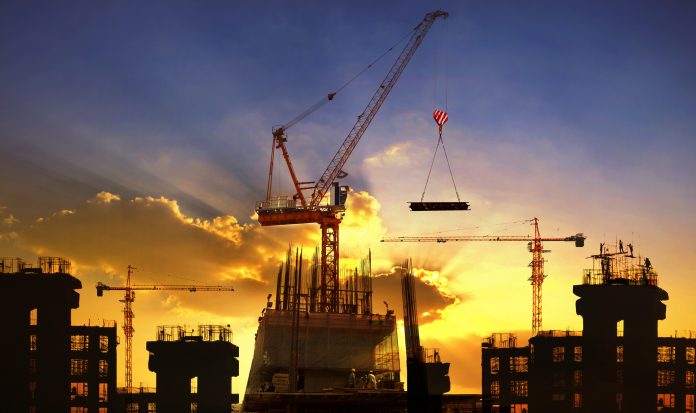In May, the cross-party Environmental Audit Committee published a report calling for government action to help reduce CO2 emissions from construction, including the introduction of mandatory whole-life carbon assessments for buildings. Committee chair Philip Dunne MP discusses the need for action to build towards a net zero future
The UK’s built environment – from concrete, brick and steel to heating and insulation – contributes an enormous 25% to the country’s greenhouse gas emissions.
While having a fully decarbonised economy may seem to many like a far-off aspiration, it’s incredibly important to review all sectors of the economy now so we can make the changes which will reduce future emissions.
Failure to do so across the globe will make severe weather events more frequent and dangerous, erode the natural environment and the precious ecosystems that inhabit it. Prudent investment now will avoid exorbitant public spending demands later as the consequences of a warming climate become ever more apparent.
No ’sustained reductions’ in emissions from buildings in the last decade
The parliamentary committee which I chair, the Environmental Audit Committee, published our report on the sustainability of the built environment in May. Our principal warning – that lack of government focus has enabled emissions from the built environment to mount ever-higher – was echoed more recently by the Climate Change Committee – parliament and government’s independent advisers on net zero. The CCC argued that there had been no sustained reductions in emissions from buildings in the last decade, spurred by the absence of any meaningful energy efficiency measures to address the 19m homes below EPC C.
The committee urged the government to get a firm grip on the issue without further delay and made a number of recommendations based on evidence collected throughout our inquiry.
Developed economies such as the Netherlands and France are championing the use of whole-life carbon assessments for new buildings. The committee recommended that the government mandate whole-life carbon assessments for UK builds. These assessments would calculate the emissions from the construction, maintenance and demolition of a building, and from the energy used in its day-to-day operation. Only after these assessments will the full picture of the emissions from buildings emerge.
Ministers should roll out carbon targets in the sector to align with the government’s net zero policy. As politicians, we are not in the business of telling private companies what they can and cannot do. But at least with an assessment and targets, decisions can be taken by developers of new buildings, as well as refurbishment of existing buildings, over what materials they wish to use.
This inevitably brings me on to my next point: the use of low carbon building materials. The emissions saved by retrofit and reuse must always be a primary consideration, but where this isn’t possible, the catalogue of low carbon building materials must be further developed. In a welcome move, the government is investing in the development of low-carbon cement and only recently ConcreteZero, backed by leading concrete and construction firms from around the world, was launched to deliver 100% net zero emission concrete by 2050. Recycled products should also play a major role and the sector should be encouraged to use more recycled steel and other recycled building materials.
Critical that health and safety implications are considered
Our committee also considered the use of timber: in the UK this not as advanced as in other countries. In the wake of the Grenfell Tower fire, it is absolutely critical that adequate research on health and safety implications of timber frames is completed, along with establishing confidence in sustainable timber supply chains.
Whitehall does seem to be in listening mode. Only recently, the government has unveiled new Building Regulations that stipulate a large-scale fire safety test must be completed before timber is used for residential buildings between 11m and 18m tall. This is very welcome and could trigger a turning point for the widespread use of timber frames for buildings. The former housing secretary also launched an investigation into the demolition and rebuild of Marks & Spencer’s flagship store on Oxford Street in central London amid concerns it could release 40,000 tonnes of CO2 into the atmosphere.
The government’s net zero emissions target is one which is to be achieved by 2050. Many may question the urgency of these policy interventions if there are decades to turn the situation around. But this is not the case. The government has set intermediate ‘carbon budget’ targets and is currently off track to meet the targets for coming years. We need to embed positive policy initiatives now if we are to achieve a net zero future.
Our construction industry is full of innovators. I know that with the right government policy support in place, and certainty to invest in the skills needed for the transition, we will be constructing net zero buildings in the very near future.

Philip Dunne MP
Chair
Environmental Audit Committee
Tel: +44 (0)20 7219 8890
https://committees.parliament.uk/committee/62/environmental-audit-committee/

















